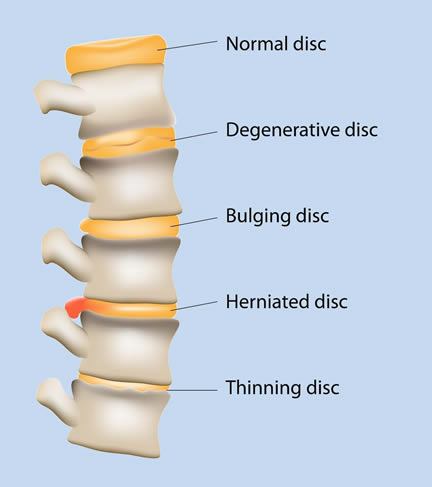Everyone ages, but not everyone encounters the same conditions in their bodies as they age. One example is the discs along your spine that act as a buffer between your bones, or vertebrae. It is likely that your discs will exhibit some wear over time, but this does not mean you’ll develop degenerative disc disease. This condition can cause a variety of symptoms and degrees of impact on patients diagnosed with it. Degenerative disc disease is a common condition that spinal specialists like Dr. Charla Fischer at NYU Langone in NYC treat often in their practices.
What is a disc and what can happen to it?
Each disc along your spine acts like a shock absorber between your vertebrae so that you can move naturally and fully without discomfort. Discs consist of a firm outer layer that contains nerves, so damage to it can be painful. They also consist of a soft, jelly-like center that can leak outside the inner core if the disc is damaged. Discs are unable to repair themselves and may begin to degenerate further after damage has begun. This may cause you to develop pain and difficulty moving.
Who gets degenerative disc disease?
Age is the most well-known trigger for degenerative disc disease. Many people have some degree of disc degeneration by age 60, but may have no symptoms and never require care. The main reason that discs start to have issues with age is that the percentage of water that makes them up decreases over time and discs have a tendency to become overly dry and unable to adequately perform their role. Also, injuries such as sports, car accidents, falls and more may damage discs and lead to increased symptoms. Dr. Charla Fischer has found that the average patient with degenerative disc disease often has good overall health, normal activity levels, and begins to notice symptoms during the ages of 30 to 50.
What does this condition feel like?
Symptoms vary among patients, but some of the most common may include:
- Instances of pain that may be nagging or debilitating and comes and goes over a period of time such as days to months.
- Pain that worsens during movements such as lifting, twisting, or bending.
- Pain that improves during more extensive activity like walking or running, versus sitting or standing for extended periods.
- Pain that improves with lying down.
- Pain that radiates down the lower back, hips, buttocks, legs, arms or hands.
- Weakness in the legs or feet.
- Tingling or numbness in the extremities.
How is it diagnosed and treated?
A qualified physician like Dr. Charla Fischer at NYU Langone diagnoses degenerative disc disease through medical history, physical examination, and imaging tests. The first course of treatment is usually conservative, including things like pain management, back bracing, physical therapy, chiropractic methods, or acupuncture. If these treatments aren’t sufficient, surgeries like artificial disc replacement or spinal fusion may be recommended. Dr. Charla Fischer will be able to help you decide the best treatment for you if you have degenerative disc disease.
Contact Dr. Fischer today to learn more about treatment options.

